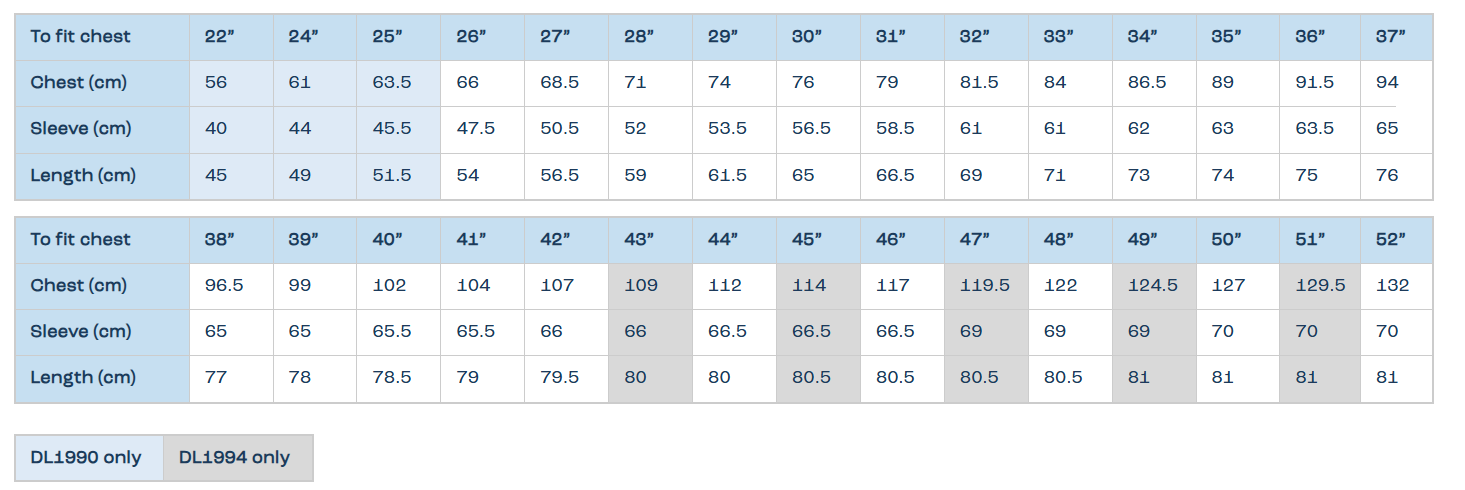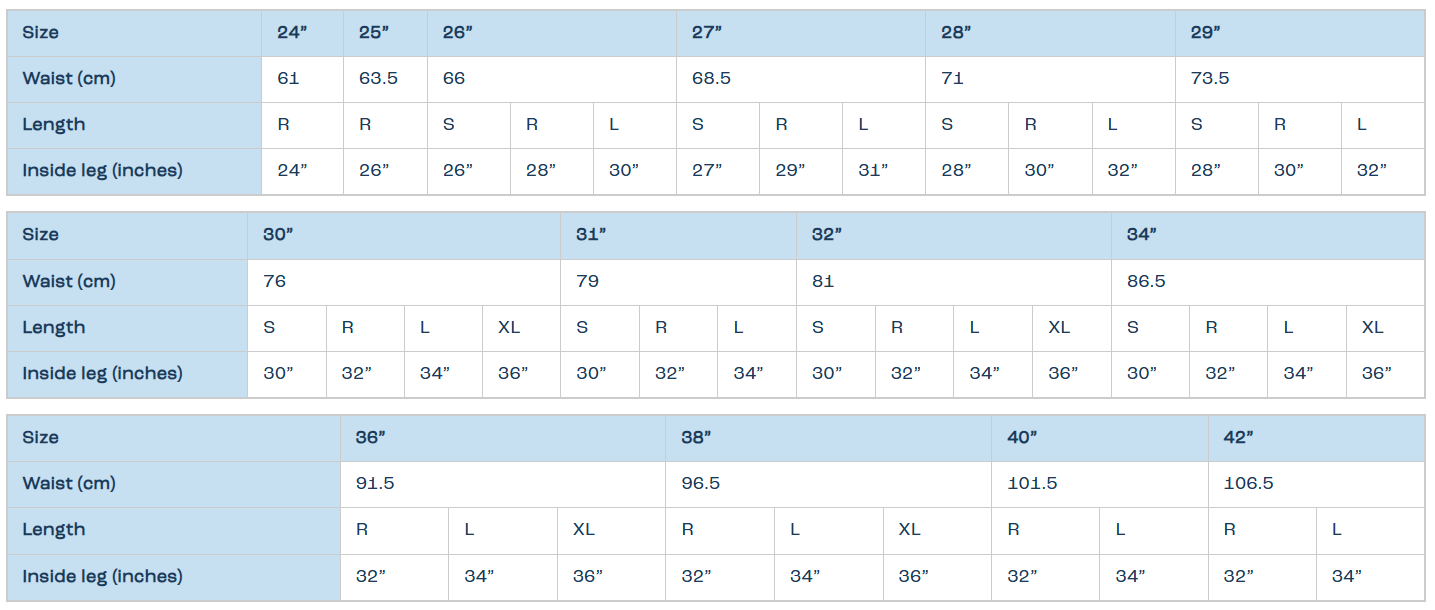Getting the right size
We know that getting the right kids clothing sizes is important, especially for school uniform as our children wear them so often. With so many clothes sizes and fits on the market, it can be tricky to find the right school blazer size in time for the new school term. Our goal is to make school uniform shopping simple and stress-free for parents, this page is filled with easy-to-use school uniform size guidea and tips.
Uniform sizing
School uniform sizing can often differ from standard kids clothing sizes as uniform is usually categorised by body measurements instead of age. Finding the right size can be tricky as kids measurements change throughout the year. As our products are true to size, we do not recommend sizing down for school uniform. However, a great tip for getting a bit of extra wear out of kids’ school uniform is sizing up by one or two sizes. This gives kids’ nice room to grow but ensures they won’t be wearing anything too oversized.
How to measure your child?
We recommend using body measurements instead of a child’s age to find the correct kids clothing size, we’ve found this is the most accurate way to find school uniform sizes. Using body measures also allows you to order with confidence instead of having multiple sizes to try.
Parents often ask, how do I measure my child at home?And it’s rather simple because we use seven key measurements for our uniform sizing. Below is each measurement and how to measure this on your child.
Top Tip:
We recommend measuring your child and taking actual body measurements to find your child’s clothing size, instead of using their age. Read on for our guide on how to measure your child.
MEASURING GUIDE
Height: Measure from a level floor to the top of the head.
Collar: Measure around the base of the neck where the collar sits.
Chest: Measure the chest at the fullest part, placing the tape measure under the arms.
Waist: Measure around the waist at the natural waistline, usually the smallest part.
Hips: Measure around the hips at the widest part.
Inside Leg: Measure with shoes on from the crotch to where trousers normal end.
Skirt Length: Measure from under the belly button to the desired length.

SCHOOL BLAZERS
The school blazer is a core piece of secondary school uniform, it’s the item our children probably wear to school most often so getting the right blazer size is key. A school blazer should fit well with room for movement, ensuring a shirt and school jumper can be worn comfortably underneath. We factored this in when designing our school blazers, so they fit true to size and accommodate clothing underneath.
Top Tip:
If you’re unsure how to measure for a blazer, we recommend using the chest measurement as the main guide, then use the sleeve length and blazer length to find the correct fit.
Measure around the fullest part of the chest, making sure that the tape is level under the arms and across the shoulder blades. Make sure you are relaxed when measuring to get a true measurement. If you measure as 30” (or 76cm) then your blazer size will be a size 30” as our blazers are true to size. When measuring the sleeve length, start from the shoulder point to where the sleeve would normally fit, this is usually where the cuff would sit on the wrist. To find the correct blazer length, measure from the top of the shoulder at the highest point to where you feel the blazer would sit when worn at the top of the thigh.
For a full breakdown of each measurement, check out the school blazer size guide below.
Boys Blazer Size Guide

Girls School Eco-Blazer Size Guide (DL1991) :

Girls Slimmer Fit Eco-Blazer Size Guide (DL1995) :

SCHOOL SHIRTS
When measuring your child for a school shirt remember that boys’ sizes are given in collar size. To measure the collar, place your tape measure around the base of the neck where the collar would sit. Our size chart also gives chest measurements for boys and girls shirts. To find the chest size, measure around the fullest part of the chest making sure the tape is level under the arms and across the shoulder blades.
Girls Shirts

Boys Shirts

SCHOOL TROUSERS
Kids school trousers use two measurements to determine clothing size, these are waist and inside leg. To measure the waist, measure around the waist at the natural waistline which is usually the smallest part. In younger children this tends to be midway between the bottom rib and the hip bone.
Kids school trousers use two measurements to determine clothing size, these are waist and inside leg. To measure the waist, measure around the waist at the natural waistline which is usually the smallest part. In younger children this tends to be midway between the bottom rib and the hip bone. When shopping our range of school trousers, you’ll notice we offer different leg lengths to ensure there are options for all kids. Our trouser lengths are small (S), regular (R ), long (L), extra long (XL), and extra extra long (XXL). To find the ideal length of trousers use the inside leg measurement. When measuring the inside leg make sure your child is stood up straight, with shoes on. Measure from the top of the leg, inside near to the crotch area down to where you would like the trouser to fit. School trousers usually sit an inch or so from the floor if this seems too long it can of course be adjusted to a comfortable length.
Top Tip:
As kids’ growth spurts are unpredictable, we know it can be frustrating buying a pair of trousers for the new school year and by half-term they’re too short. To increase the lifespan of your school trousers, our tip is to buy a longer pair and hem them. Don’t worry if you’ve not got a sewing kit to hand, take a look at our Product Care page for easy to follow tutorials.
Junior Girls School Trousers Size Chart:

Senior Girls School Trousers Size Chart

Junior Boys School Trousers Size Chart

Senior Boys School Trousers Size Chart

DL943 Regular Fit Elastic Back Senior Boys' Trousers

